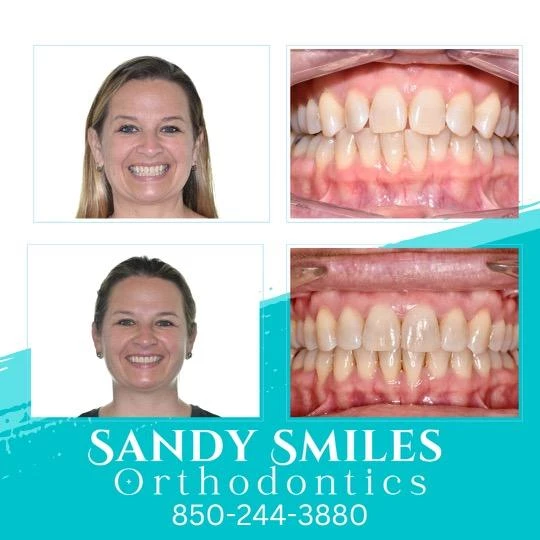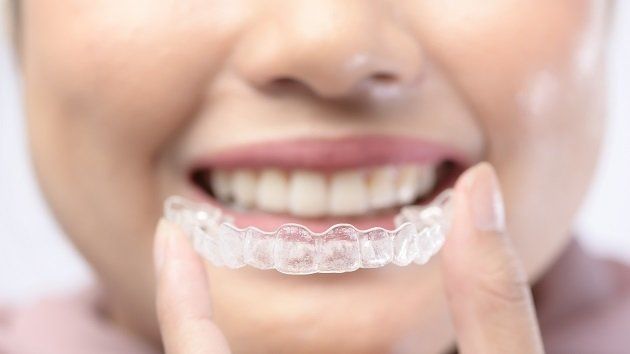The Expense of Invisalign: Comprehending the Investment in Your Smile
The Expense of Invisalign: Comprehending the Investment in Your Smile
Blog Article
Invisalign vs. Conventional Dental braces: Which Alternative Is Right for You?
When thinking about orthodontic therapy, the selection between Invisalign and conventional dental braces offers several essential aspects that warrant mindful assessment. Invisalign uses a very discreet choice with removable aligners, while conventional braces supply an extra noticeable yet effective service for serious imbalance. Each alternative incorporates distinctive benefits and disadvantages associated with aesthetics, comfort, treatment duration, and cost. Comprehending these nuances is essential for making a notified decision that aligns with your individual preferences and way of life. The question remains: which option will best fulfill your orthodontic demands and assumptions?
Review of Treatment Options

On the other hand, standard dental braces contain steel brackets and cords that are bonded to the teeth. This approach applies continual pressure with time to accomplish placement. While efficient for complicated orthodontic concerns, conventional dental braces call for normal sees for adjustments and can position difficulties in keeping oral hygiene because of the problem of cleansing around brackets and cables.
Both alternatives have their values, and the selection usually depends upon details oral conditions, way of life preferences, and patient conformity. Inevitably, seeking advice from an orthodontic specialist is critical for identifying the most appropriate treatment plan tailored to private requirements. Comprehending the nuances of each choice can substantially affect the general success of orthodontic treatment.
Visual Considerations
A significant variable affecting the choice in between Invisalign and typical braces is the aesthetic allure each treatment offers. Invisalign aligners are crafted from clear plastic, making them basically unseen when used.
On the other hand, typical dental braces contain steel braces and cables, which can be much more recognizable. While developments in orthodontic innovation have actually brought about the growth of smaller sized brackets and colored elastics, typical braces still keep a more noticeable account. For some individuals, the presence of braces might discourage them from looking for necessary treatment.
Ultimately, the option in between Invisalign and conventional dental braces may rest on personal choices regarding appearances. Individuals that focus on discernment typically lean toward Invisalign, while those that are less worried regarding presence might choose traditional braces. Comprehending the visual implications of each choice is crucial for making a notified choice that straightens with one's lifestyle and preferences.
Comfort and Convenience

In terms of benefit, Invisalign aligners are removable, enabling people to appreciate their preferred foods without restriction and maintain optimum dental hygiene. Brushing and flossing are streamlined, as the aligners can be secured during these routines, whereas typical dental braces require careful steering around cables and brackets.
In addition, Invisalign's modern system allows for less orthodontic visits. Clients generally obtain several collections of aligners simultaneously, which can improve the therapy process and reduce time invested in the orthodontist's chair. In contrast, standard braces demand regular changes, making them less hassle-free for those with hectic timetables. Invisalign. In general, the comfort and ease of Invisalign make it an attractive selection for lots of people seeking orthodontic therapy.
Treatment Duration and Performance
While both Invisalign and typical braces are efficient in dealing with dental misalignments, the period of therapy can differ considerably in between the 2 options. Normally, Invisalign therapy can take anywhere from 12 to 18 months, relying on the intricacy of the situation. The clear aligners function by progressively shifting teeth into their preferred settings, and routine follow-ups with an orthodontist aid ensure progress remains on the right track.
On the other hand, typical dental braces often require a longer commitment, typically ranging from 18 months to three years. This is because of their set nature and making use of cables and braces, which can be a lot more efficient for complicated situations and serious misalignments (Invisalign). The treatment effectiveness of traditional braces is well-documented, as they enable precise adjustments and better control over tooth activity
Inevitably, the choice between Invisalign and traditional dental braces might pivot on both the expected treatment duration and the specific oral concerns available. Consulting with an orthodontist is important, as they can supply tailored recommendations based on specific demands, making certain the picked technique lines up with desired timeframes and results.
Cost Contrast and Insurance Policy Choices
Expense plays a significant duty in the decision-making process for people taking into consideration orthodontic treatment, whether opting for Invisalign or typical braces. Usually, the price of Invisalign ranges from $3,000 to $8,000, while traditional dental braces generally set you back between $2,000 and $6,000. Factors affecting these costs consist of the complexity of the case, the duration of therapy, and geographical place.
Lots of dental insurance coverage strategies provide partial protection for orthodontic therapies, yet the specifics can vary commonly. Normally, traditional braces may be a lot more frequently covered by insurance coverage plans contrasted to Invisalign, which some insurers categorize as an aesthetic treatment.
In addition, several orthodontic methods supply have a peek here flexible repayment strategies, making both therapy options more easily accessible. People ought to ask about potential funding alternatives and price cuts for ahead of time repayments. Evaluating the total cost, consisting of insurance policy benefits and payment strategies, is crucial for making a notified choice that lines up with both visual preferences and spending plan considerations.

Final Thought
In summary, the option in between Invisalign and traditional dental braces rests on several aspects, including aesthetic choices, convenience, therapy period, and expense. Invisalign supplies a very discreet, removable choice that facilitates oral hygiene and dietary flexibility, while typical dental braces might be better for complicated dental issues and often come with a reduced price point. Inevitably, appointment with an orthodontist is crucial to examine private circumstances and determine one of the most proper treatment alternative for attaining ideal oral positioning.
When considering orthodontic treatment, the choice in between Invisalign and typical dental braces presents numerous crucial factors that warrant cautious evaluation.Contrasting Invisalign and standard braces discloses distinct therapy options for orthodontic correction.While both Invisalign and standard braces are efficient in correcting oral imbalances, the duration of therapy can vary significantly between the 2 choices.Price plays a considerable duty in the decision-making process for people considering orthodontic therapy, whether deciding for Invisalign or conventional dental braces.In summary, the option between Invisalign and standard dental braces hinges on several factors, including visual preferences, comfort, therapy duration, and expense.
Report this page